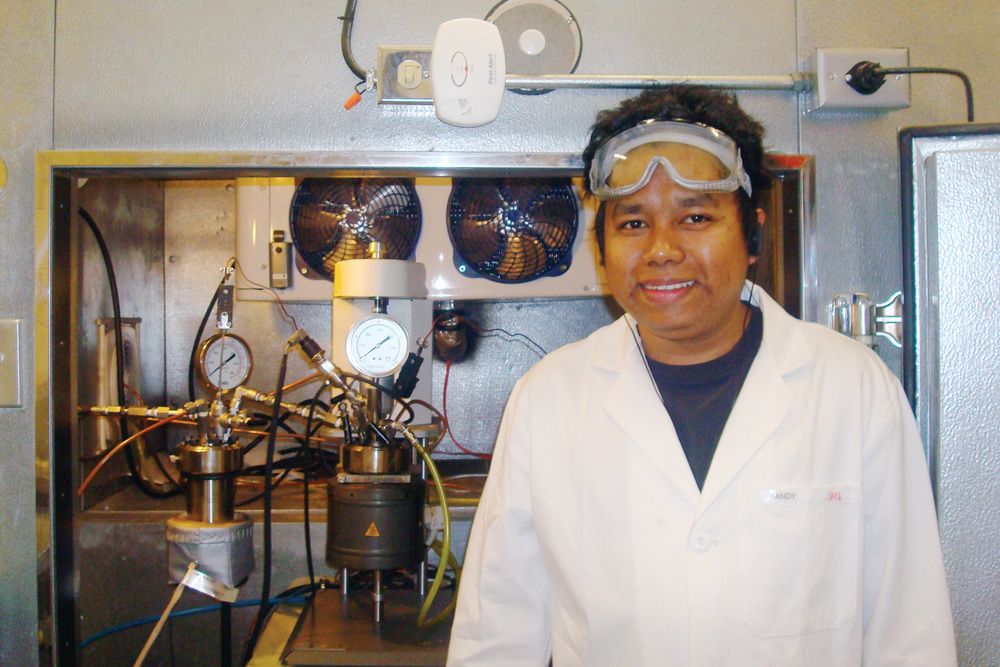Converting Waste to Value

PHOTO: UNIVERSITY OF IDAHO
July 15, 2011
BY Erin Krueger
As the biodiesel industry continues to ramp up production, the amount of crude glycerin entering the market will also increase. In the past, some producers have struggled to find a home for the low-value byproduct. However, several research projects are underway with the goal of using the product as a feedstock for higher-value bio-based products, including propylene glycol. One such project at the University of Idaho is being led by Brian He, an associate professor, and graduate student Randy Maglinao.
He tells Biodiesel Magazine he has been interested in pursuing this line of research for several years and was finally awarded an internal grant through the university’s National Institute of Advanced Transportation Technology last year. A technical report that outlines the first stage of the research was recently released. “It is really a summary for the first stage to see if it’s feasible to convert glycerol from biodiesel production into something useful,” He says.
The technical report notes that propylene glycol and glycerin are very similar chemically. Glycerin is converted into propylene glycerol when one of the three oxygen/hydrogen groups in the molecule is replaced by a single hydrogen atom. This has been done in the past by supplying the molecule with external hydrogen. According to the report, in this situation the hydrogen (H2) reacts with the oxygen/hydrogen group to form water, leaving behind one hydrogen atom.
Advertisement
He and Maglinao have tried to create this reaction without the use of external hydrogen. Rather, the team theorized that adding water, heat and pressure—and using a catalyst—the glycerol could be converted into propylene glycol without adding any external hydrogen. “Of course, the drawback of [this method] is that you have to sacrifice some of the feedstock to internally generate hydrogen…that is immediately used for hydrogenation in the process,” He says. “That is the major interest in my research. If I can do this, I don’t have to have an additional facility just for hydrogen generation. Also if I sacrifice some of the glycerin, I can generate the hydrogen, thus…lowering the cost.” However, more research is needed to prove the concept on a larger scale, He continues.
To date, He’s research has been completed in a 300 milliliter reactor. He is now working to secure funding to scale up the process to a slightly larger bench scale; a 1 gallon, continuous flow reactor. Additional goals of his future research include improving the catalyst and optimizing the production of propylene glycol rather than ethanol. “The next step is to see if I can find an alternative catalyst that targets only one [of these products] to optimize the targeted product in terms of yield,” he says.
Advertisement
Upcoming Events





